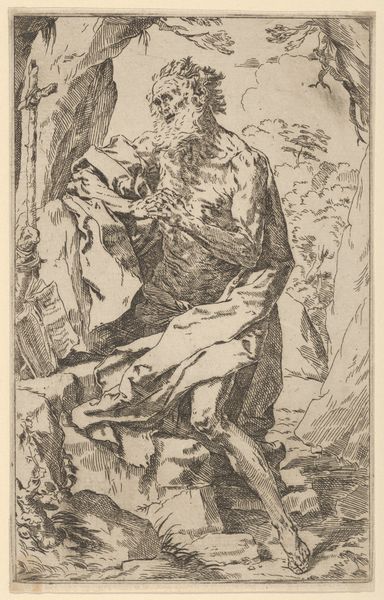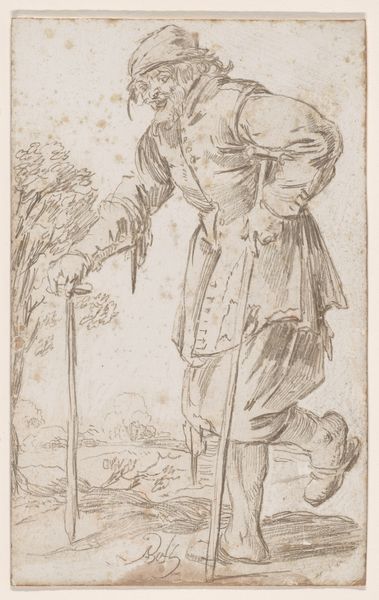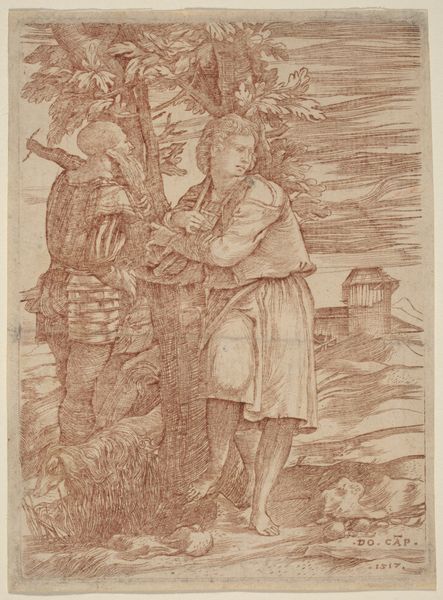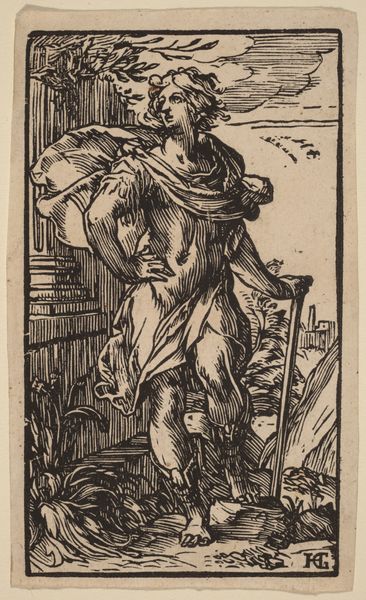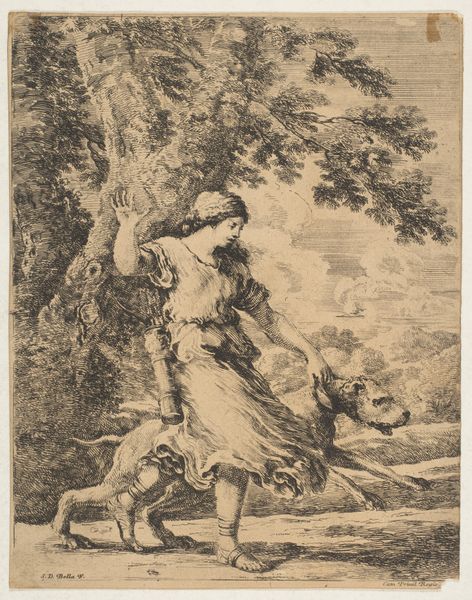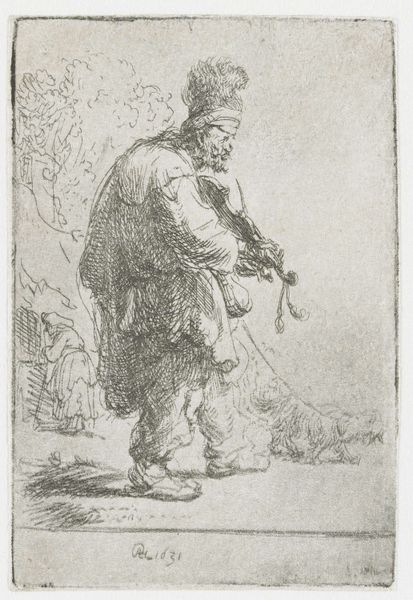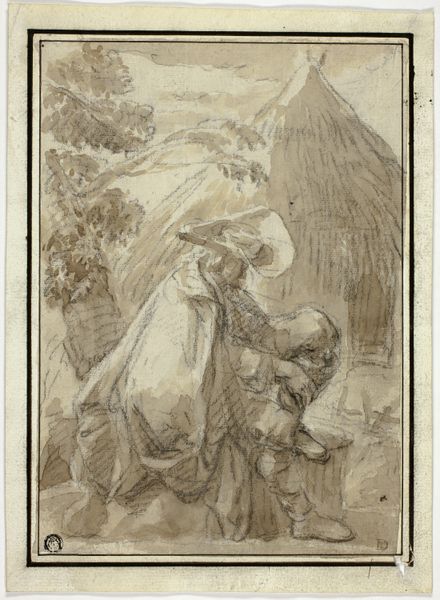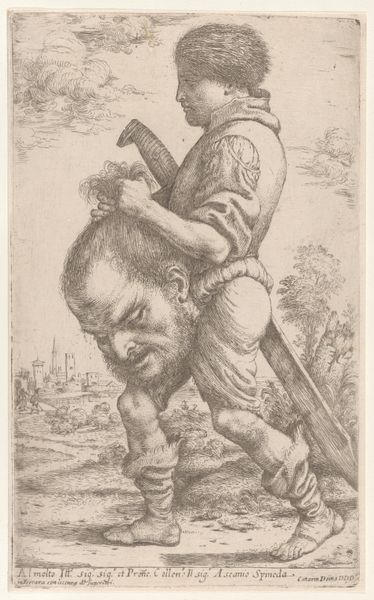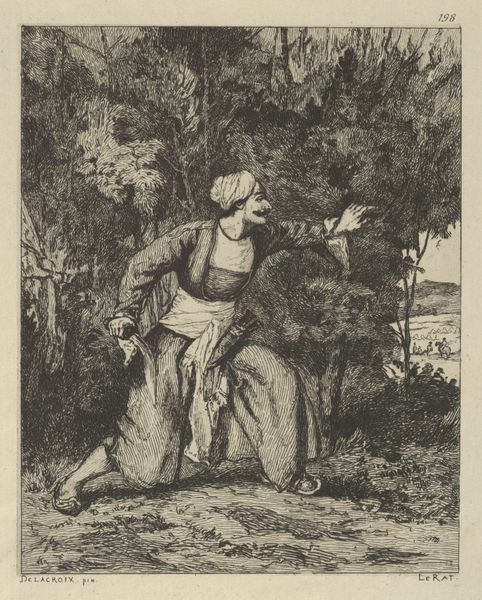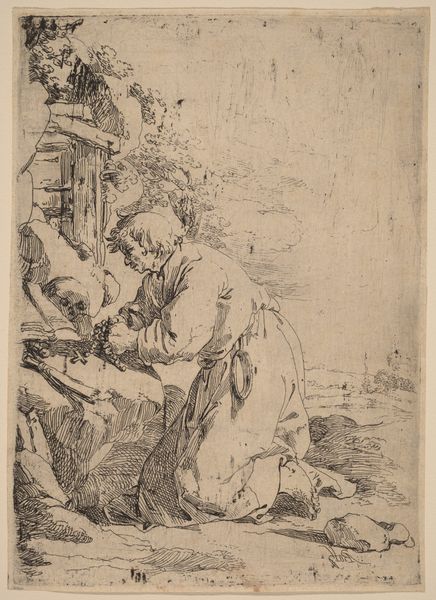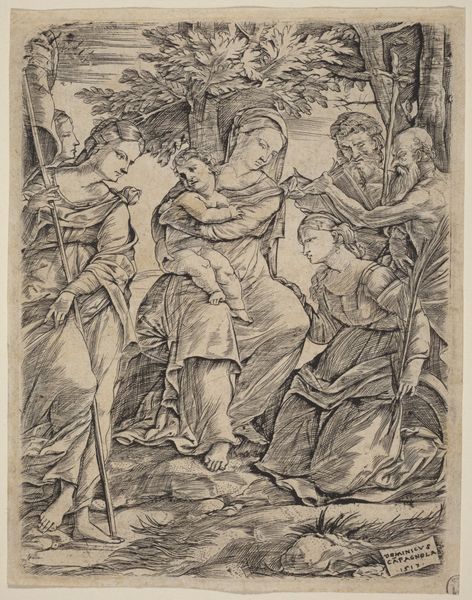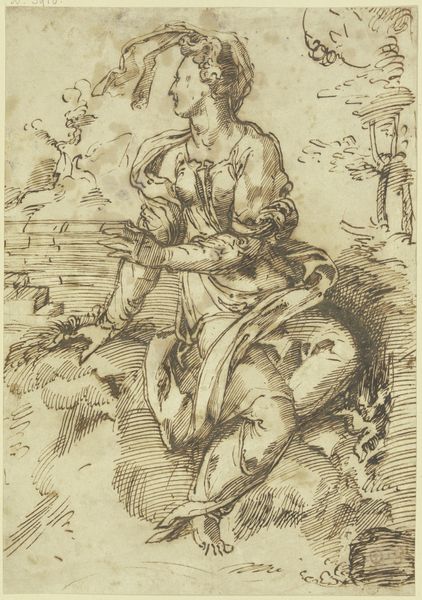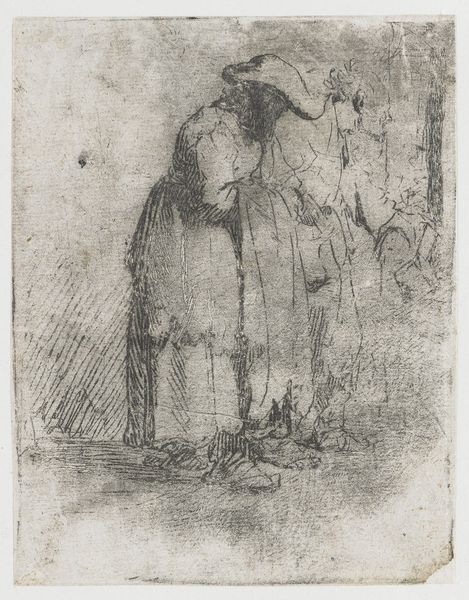
Saint Roch, kneeling on a stone, seen from the side with his dog behind him and a townscape in the background at left 1620 - 1630
0:00
0:00
drawing, print, engraving
#
portrait
#
drawing
#
baroque
# print
#
dog
#
landscape
#
figuration
#
engraving
Dimensions: Sheet (Trimmed): 5 9/16 × 3 9/16 in. (14.2 × 9 cm)
Copyright: Public Domain
Editor: This engraving from 1620-1630, by Giuseppe Caletti, called Cremonese, depicts Saint Roch. I’m struck by the intricate detail, especially considering it’s a print. It’s small but creates a sense of space and even tells a whole story within this limited space. How would you interpret the social elements in this work? Curator: This work fascinates me because it exemplifies the distribution of devotional imagery to a wide audience. Engravings, as reproducible media, allowed for the democratization of art and faith. Saint Roch, patron saint of plague victims, becomes accessible to everyday people during periods of widespread disease, reflecting anxieties and hopes tied to public health and faith practices within a specific material context. The choice of printmaking allows his image to proliferate. How does this availability change his purpose as an artistic subject? Editor: That’s interesting! So, it’s less about individual artistic genius and more about mass production for a purpose? I hadn’t considered that aspect. Curator: Precisely. It redirects our focus to the print shop as a site of labor, skill, and social engagement, rather than the isolated artist. Furthermore, examine the relatively inexpensive materials; the print is not just an image but a commodity available to those who seek solace and protection, democratizing religious iconography through its wide accessibility and comparatively cheap means of making. What statement about devotional practices do the printing and distribution techniques used to produce works like this communicate? Editor: It’s compelling how the very means of production—engraving—become central to understanding its meaning and impact. Seeing the connection between materiality, access, and cultural anxiety around disease shifts the perspective entirely! Thank you! Curator: My pleasure. Focusing on process and materials gives us new insights into what this print really communicates.
Comments
No comments
Be the first to comment and join the conversation on the ultimate creative platform.
